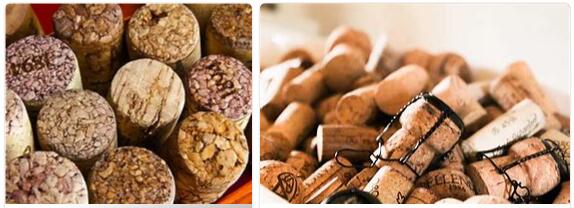
According to abbreviationfinder.org, the Latin word cortex derived in the Mozarabic kórčo, which in turn came to our language as cork. That is the name given to the plant tissue made up of cells that, through a chemical transformation, present the cellulose of their membrane converted into suberin (an elastic and waterproof substance).
Cork is found in the roots, branches and the peripheral sector of the trunk of certain trees, such as the Mediterranean cork oak. It usually appears as thin sheets that form layers.
To extract the cork, an ax is used to remove the bark from the tree. In this way cork sheets are obtained, which are stacked for at least six months so that the material stabilizes.
Then begins the industrial treatment of cork, which can be developed in different ways. The plates are usually boiled for an hour and then cured for a year. Once cured, the cork is boiled again and finally cut.
On the other hand, with the remains of the plates and with the lower quality cork, after a process of crushing, agglutination and pressing, an agglomerated material is produced that has various uses.
In the field of botany, the plant tissue that we commonly call cork is known by the name of phlegm or suber. It is dead tissue that covers the entire tree trunk to protect its interior from different types of damage, such as the action of certain animals and insects or from drying out.
Suberin, mentioned above, is the fundamental component of cork. It is a natural polymer produced by the walls of certain plant cells. As with cutin (a macromolecule found in terrestrial plants), suberin is composed of fatty acid hydroxides and epoxides linked by ester bonds .
It goes without saying that cork is a product of great importance throughout the world, in part due to the popularity of alcoholic beverages that are usually bottled and protected from the outside by means of a cork stopper. Every year, 340,000 tons of cork are produced around the world, and the country that is in the lead is Portugal, with a volume that exceeds 60%.
The qualities of cork are very particular, and make it especially attractive to humans:
* lightness: its density is low because almost 90% of its volume is made up of air;
* elasticity: the cork can recover its initial volume after being subjected to a certain deformation, and this can be seen in the covers of this material. It allows a compression close to 50% without losing the possibility of returning to its original shape and volume;
* high coefficient of friction: thanks to having a large number of micro-suction cups on its surface, it adheres easily, something that makes it reliable for sealing bottles;
* impermeability: thanks to the presence of ceroids and suberin in its cells, it is not easy for a gas or liquid to pass through its structure ;
* thermal insulation: since its natural function is to protect the trunk of the cork oak, cork has among its properties the ability to resist the passage of heat.
One of the most common uses of cork is the creation of stoppers for glass bottles. Most wine bottles, for example, are closed with a cork stopper.
Cork is also used to make panels. By hanging a corkboard on a wall, notes can be affixed with thumbtacks or thumbtacks, setting up a bulletin board or reminder.